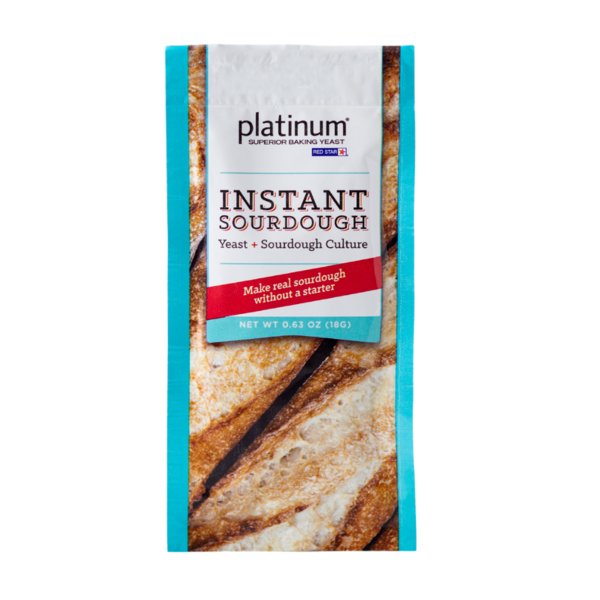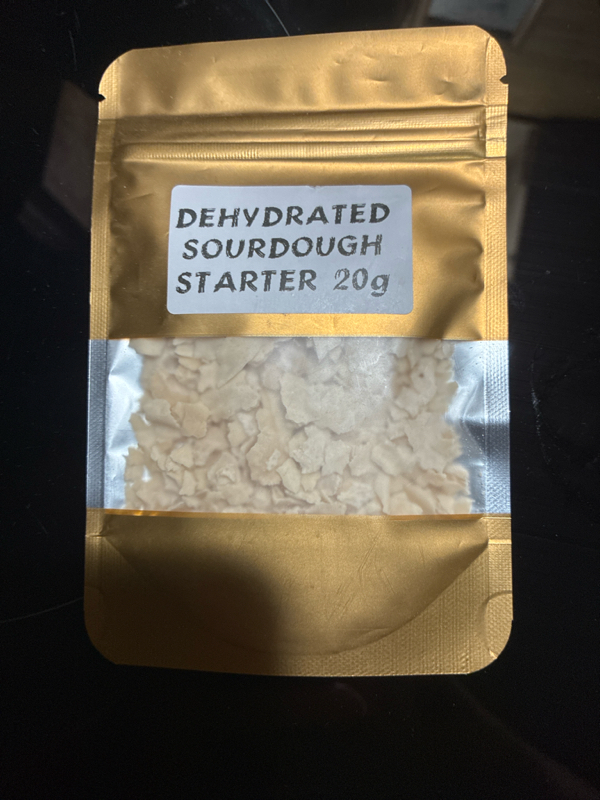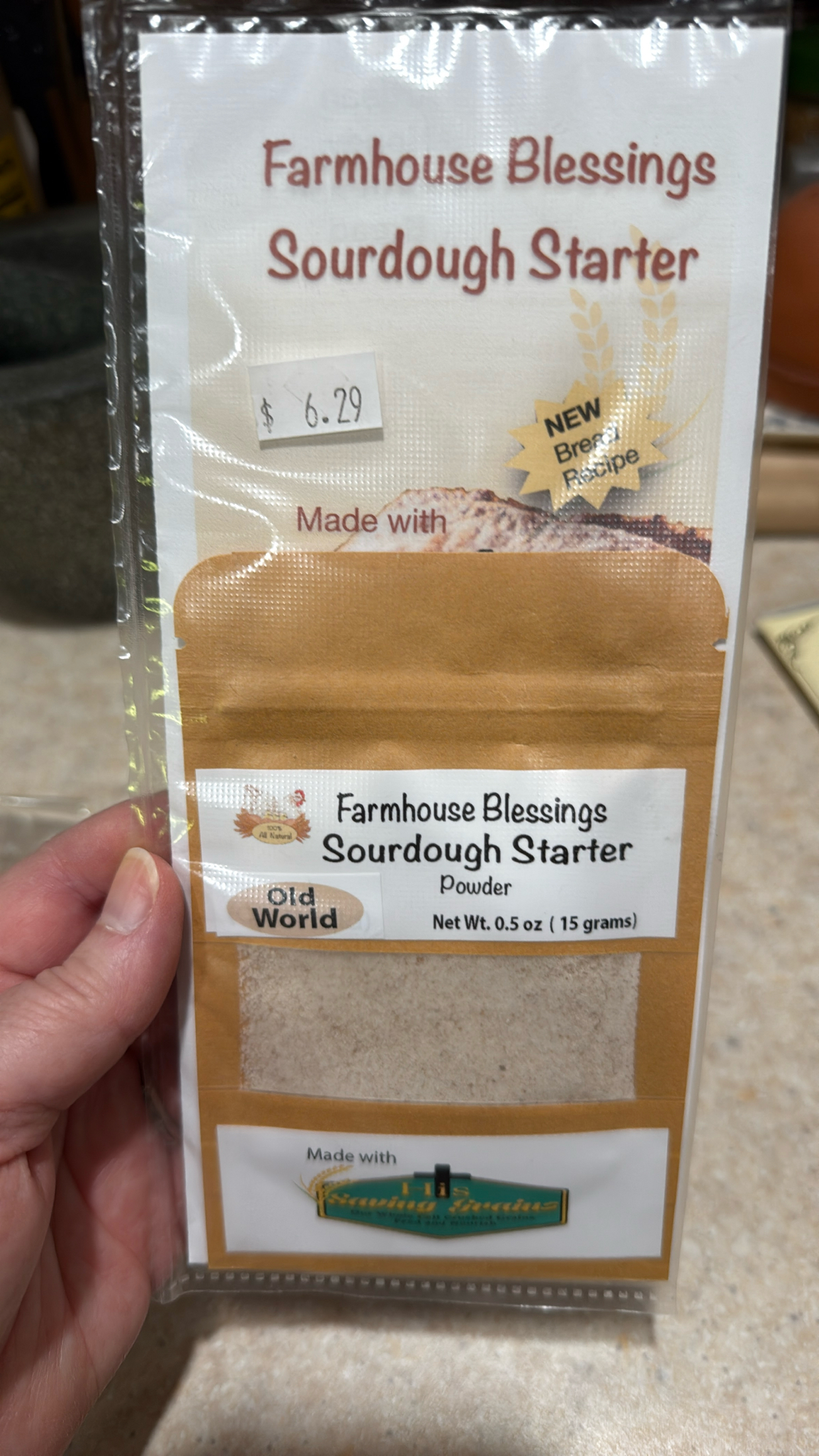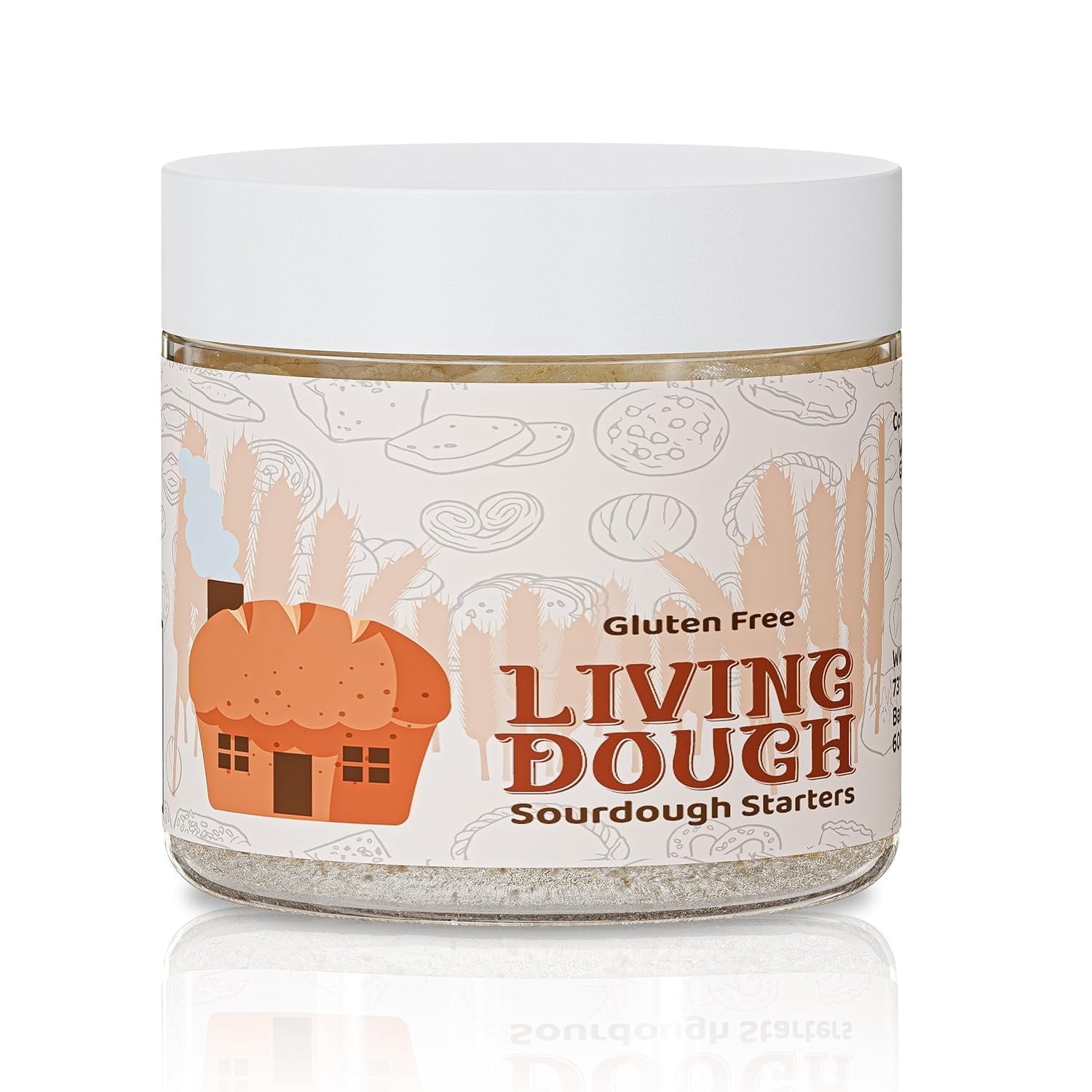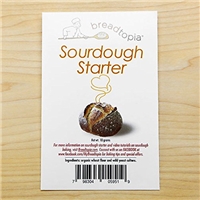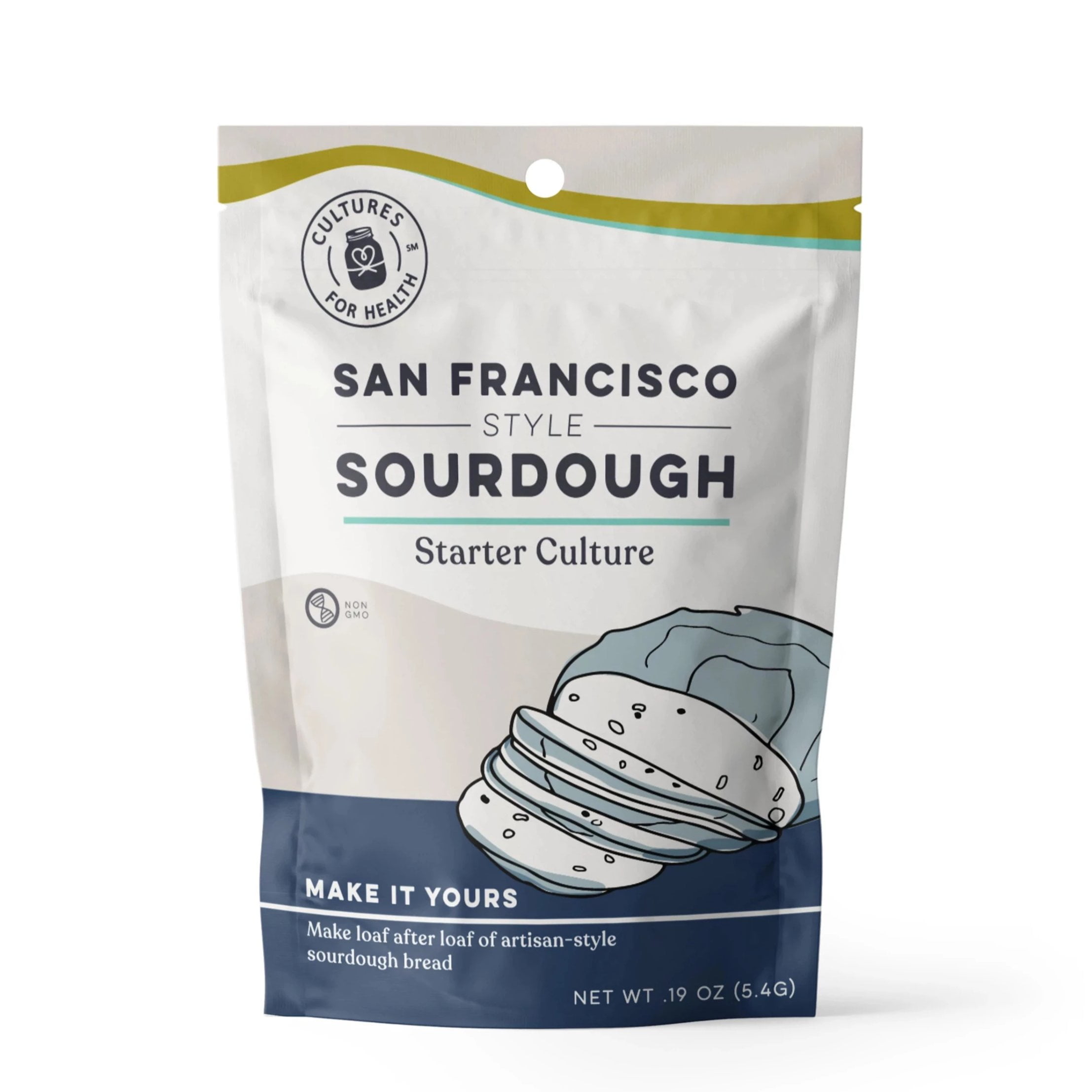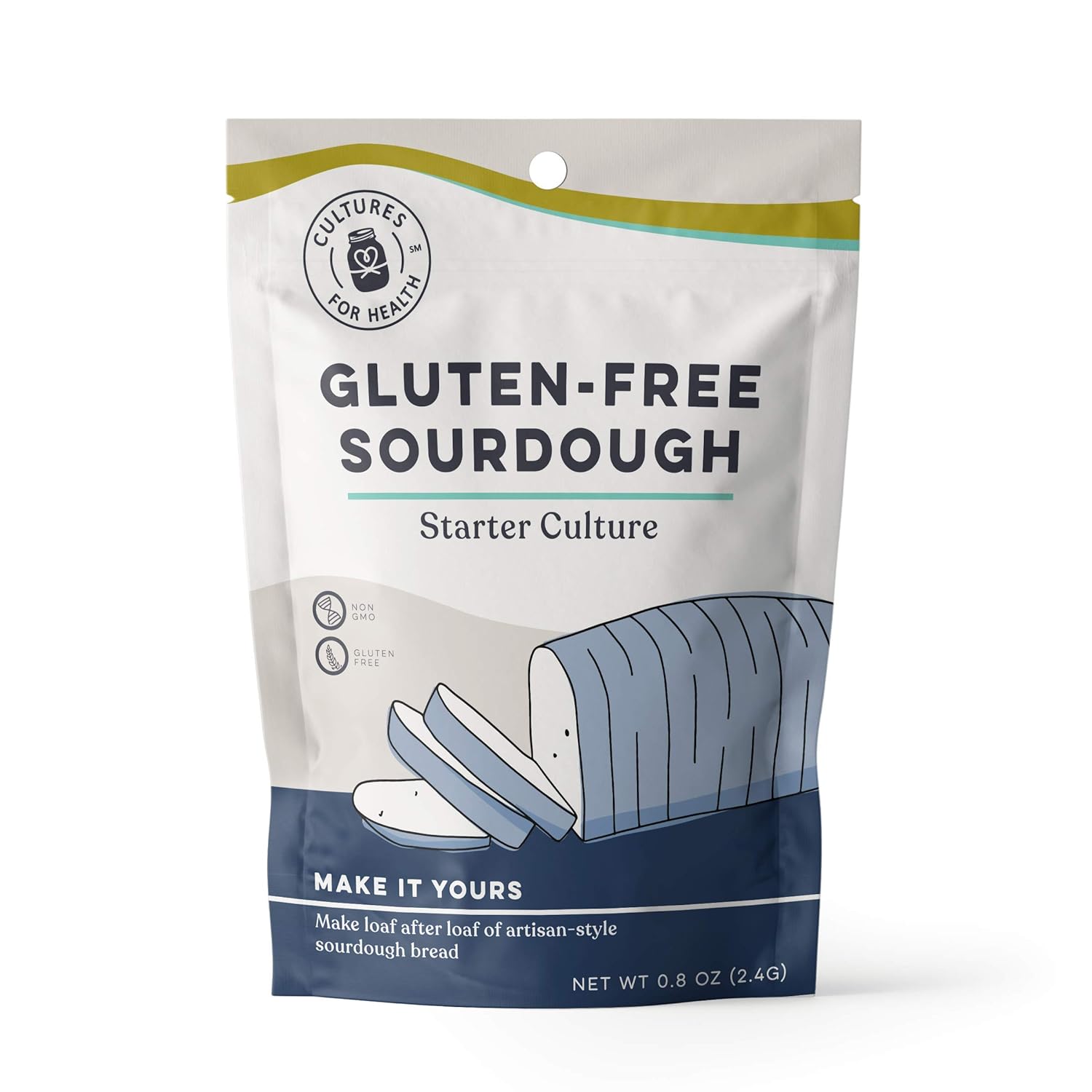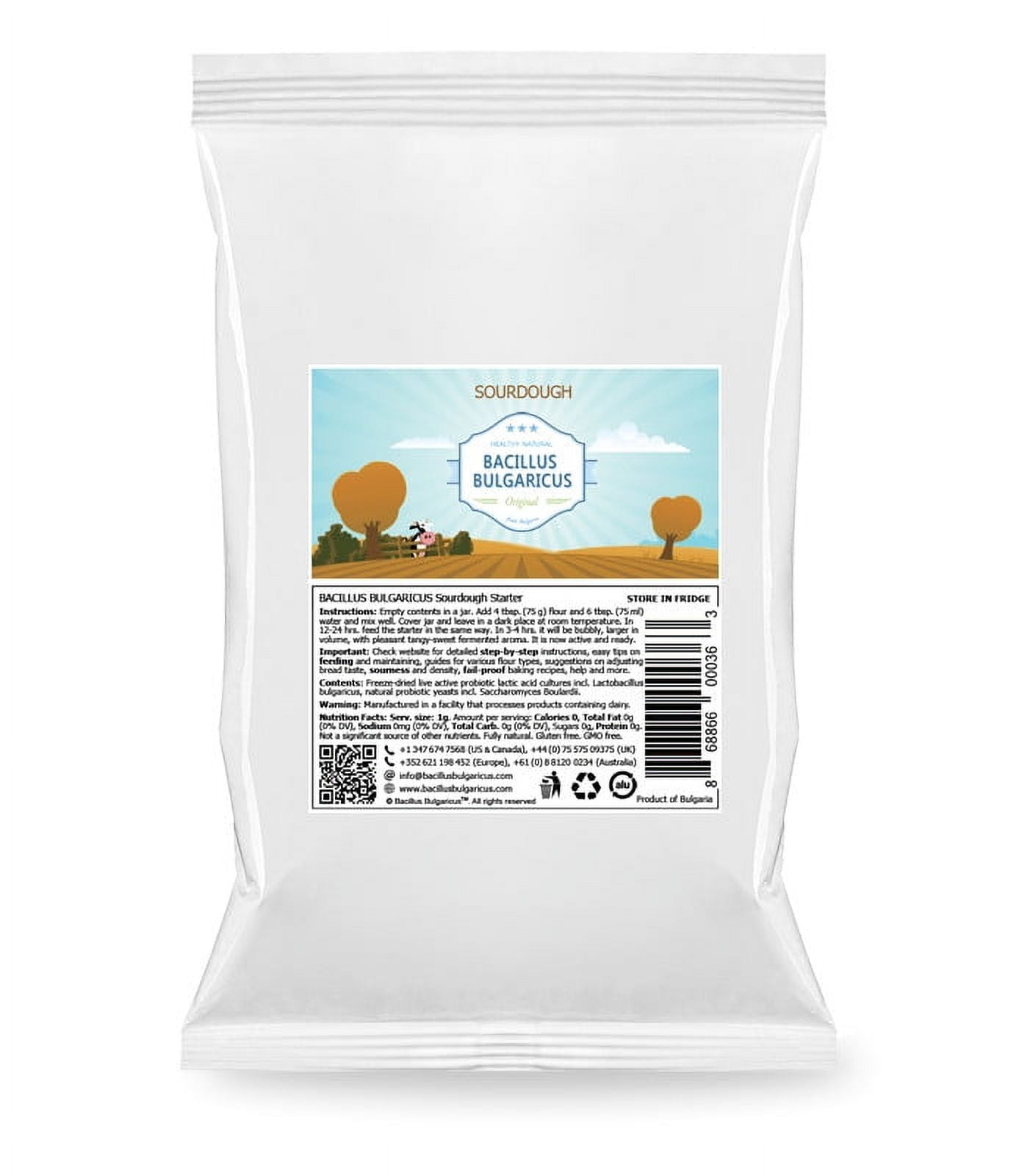Sourdough Starter
Sourdough starter is a live, fermented mixture of flour and water, containing naturally occurring yeasts and lactic acid bacteria. It is used as a leavening agent in sourdough bread, producing the distinct tangy flavor and chewy texture for which it is known. The starter can be made from scratch at home or purchased ready-to-use from a bakery or specialty store.
To create and maintain a sourdough starter, one must regularly "feed" it with fresh flour and water, allowing the wild yeasts and bacteria to grow and multiply. This process typically takes around five days, after which it can be used for baking or stored in the refrigerator for later use.
81%
CARBS
0%
FAT
19%
PROTEIN
45 Sourdough Starter Products
Cultures for Health San Francisco Sourdough Starter | Heirloom Style Dehydrated Culture for Baking Sourdough Bread | Perfect for Pancakes, Biscuits, Pretzels, & More | Non-GMO Prebiotic Artisan Bread
Red Star Platinum Instant Sourdough Yeast + Sourdough Culture
Dehydrated Sourdough Starter
Sourdough Starter Powder
Living Dough - Live Sourdough Starter Culture - Gluten Free Sourdough Starter Culture
Artisanal Sourdough Starter Culture
Sourdough Starter 10 grams
Cultures For Health San Francisco Sourdough Starter, DIY Artisan Bread
Cultures for Health Gluten-Free Sourdough Starter Culture
Bacillus Bulgaricus Sourdough Starter Pack of 2
Used In 6 Recipes
Sourdough Starter Is Frequently Used With
Sourdough Starter FAQ
One of the most common issues when cooking with sourdough starter is properly managing the fermentation process. This delicate balance can be affected by factors like temperature, feeding schedule, and the type of flour used. When things go awry, the starter may not rise properly or could develop an off taste. To get the most out of your sourdough starter, be sure to feed it on a regular basis (daily if it's kept at room temperature, weekly if refrigerated) and use it when it's at its peak activity level, usually a few hours after feeding.
A lesser-known tip is that sourdough starter can be used in recipes beyond bread. Consider using it in pancakes, biscuits, or even pie crusts for extra flavor. If you find yourself with an abundance of sourdough "discard" (the leftover starter that you need to remove before feeding), don't throw it away - this also has many potential uses in the kitchen.
Why isn't my sourdough starter rising?
Why does my sourdough starter smell like vinegar
What type of flour is best for sourdough starter?
Can I use tap water in my sourdough starter?
Why is my sourdough starter so runny?
Can I use sourdough starter straight from the refrigerator?
Why does my sourdough starter have a layer of liquid on top?
Can I use sourdough starter instead of yeast in a recipe?
Can I feed my sourdough starter with different types of flour?
What should a healthy sourdough starter look like?
Expiration & Storage Tips
When does sourdough starter expire?
A sourdough starter doesn't exactly expire; instead, it can go dormant if not regularly fed. If you're baking regularly, your starter could live indefinitely! When actively using it, keep it at room temperature and feed it daily. Unfed, it can survive up to a week. If you're not a frequent baker, store the starter in the refrigerator and feed it once a week. Even if you forget to feed it for a longer period, it usually can be revived by regular feedings over a couple of days. However, if your starter changes color dramatically or develops mold, it's time to discard and start a new one.
How do you tell if sourdough starter is bad?
A healthy sourdough starter has a pleasant, slightly acidic aroma similar to beer, vinegar or ripe apples. If your starter smells exceedingly sour, vomity, or develops a pink, orange or any other color tinge, mold patches - it's bad news, and you should discard the starter. Also, if your starter hasn’t been fed for a longer time, it may develop a layer of dark liquid on top - this is called 'hooch' and is a sign of lack of feeding, but it's not harmful. Simply pour it off and feed your starter.
Tips for storing sourdough starter to extend shelf life
• Store your sourdough starter in a glass or plastic container. Avoid metal; as it can react with the acids in the starter.
• Ensure the container is tightly sealed. This helps keep unwanted bacteria out and prevent your starter from drying out.
• Consistent feeding is crucial. For room temperature storage, feed every 24 hours. For refrigerator storage, feed once a week.
• Always use room temperature water when feeding your starter. Cold water can slow down the fermentation process.
• If you're going on vacation or not planning to use it for a while, dehydrate it to make sourdough starter 'flakes'. This puts it into a dormant state for longer storage. Rehydrate with equal parts water and feed it to revive.
EXPIRES WITHIN
2 - 2.9
YEARS
Health Info
Macros
105g
CARBS
0g
FAT
24g
PROTEIN
Allowed on these diets
LOW FAT
HIGH CALCIUM
VEGETARIAN
MEDITERRANEAN
VEGAN
LACTOSE FREE
Contains these allergens
WHEAT


